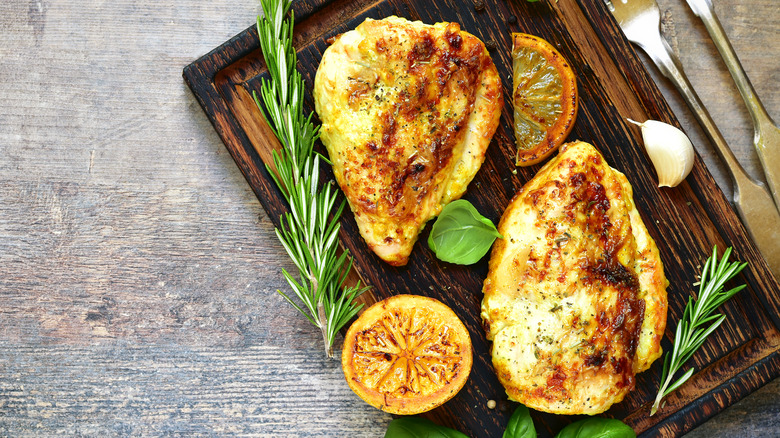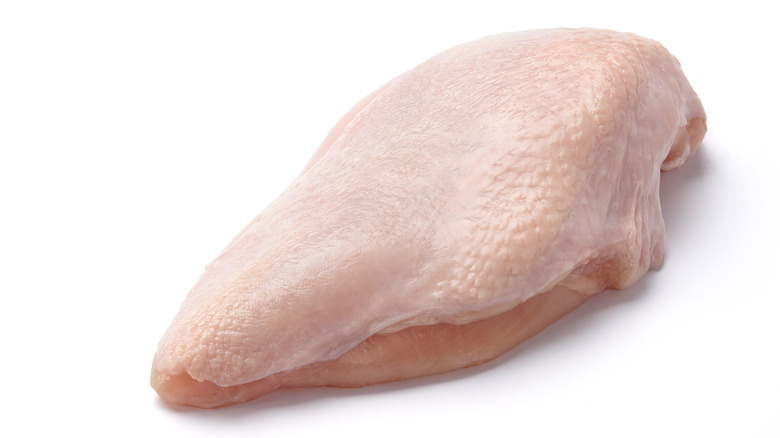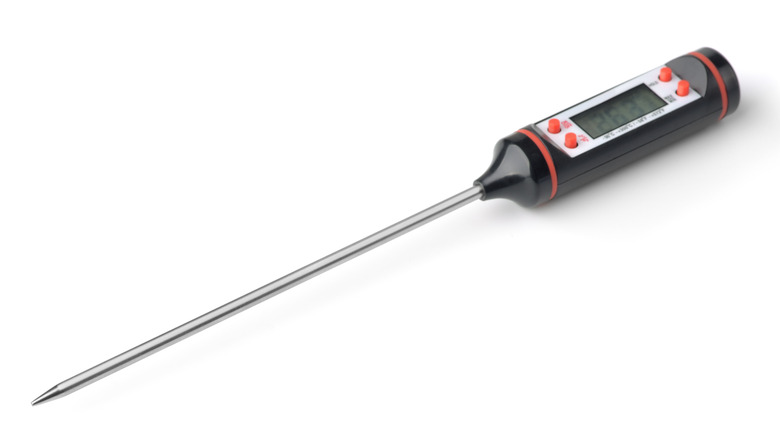How To Debone Your Own Chicken Breast For Elevated Flavor Every Time
Americans rely on chicken for plenty of meals. If you add up all of the pork and beef Americans consume, that duo barely nudges chicken out of the top spot of our favorite meat. That love leads to rotisserie chickens being virtually inflation-proof.
When cooking our own chicken, breasts are the first thing novice cooks try to master. Lean, white meat is our preferred cut. It cooks quickly, can be cooked in just about any manner, and the mild flavor acts as a blank canvas for seasonings and sauces. Chicken breasts are also pretty much ready to cook as soon as you open the package. Remember, you don't actually have to wash chicken.
The only problem with boneless, skinless chicken breasts is that both of those things that have been removed can provide some needed flavor. They're insurance against overcooking the breast, and that's a big deal. Unlike dark meat, which requires some time to become tender, chicken breasts go from juicy and perfectly cooked to dry and stringy in only a few degrees. So, it might be worth buying chicken breasts with the skin and bones still attached.
For the ultimate chicken breast, buy them on the bone, and grab a knife
Bone-in chicken breasts are covered with skin and the rib cage. Crispy chicken skin is a treat on its own, but it spares the easy-to-overcook breast meat from the heat. Bones are a well-known way to help ensure the meat remains juicy. The bones, however, do make these breasts tough to eat. Most of us don't want to carve a chicken on our plates. And, if your chicken breasts are cooked to the proper temperature, there's no need for the bone's safety net.
In this case, the ultimate chicken breast is skin-on and bone-off. That's not an off-the-shelf option at supermarkets. Thankfully, it's easy enough to do by yourself. Place the breast skin side down, and find where the breast meat connects to the breast bone on the thicker end of the breast. Insert a small boning, or paring knife, at that junction, and begin to peel the meat off the bone by making gentle swipes of the blade. Be sure to angle the knife toward the bone for the cleanest cut.
Once removed, ensure no portion of the wishbone remains in the thicker end of the breast. If there, run the knife along the sides of this thin bone to remove it. If you're worried about the waste of buying bone-in chicken only to throw those away, don't. Those bones are perfect for making chicken stock.
Ensure perfectly cooked chicken breast
All poultry needs to be cooked to a minimum of 165 degrees Fahrenheit. Dark meat, like legs and thighs, needs higher temperatures to become tender and will remain juicy owing to its higher fat content. Breasts, however, will quickly push the moisture from the muscle fibers beyond 165. So, the goal is to hit that number right on the head.
The most essential tool to ensure an upgraded and consistent chicken breast every single time is an instant-read thermometer; some understand there are practical reasons why you should own more than one. Digital probe thermometers are easy to read, register the temperature within seconds, and are affordable. Wirecutter's two top-rated thermometers are only about $50. Some feature a probe on the end of a cord that can stay in the chicken as it cooks. Even if it's in the oven, the heat-proof cord can run out the door to the readout. These can be set to trigger an alarm once the food hits the target temperature.
Be sure to account for carryover cooking. A chicken breast's internal temperature will continue to rise after it's left the oven, pan, grill, or air-fryer. How many degrees of carryover is a complex formula, but a good rule of thumb is five degrees for something the size of chicken breasts. So, set your alarm, or pull the chicken off the heat at 160 degrees Fahrenheit.


